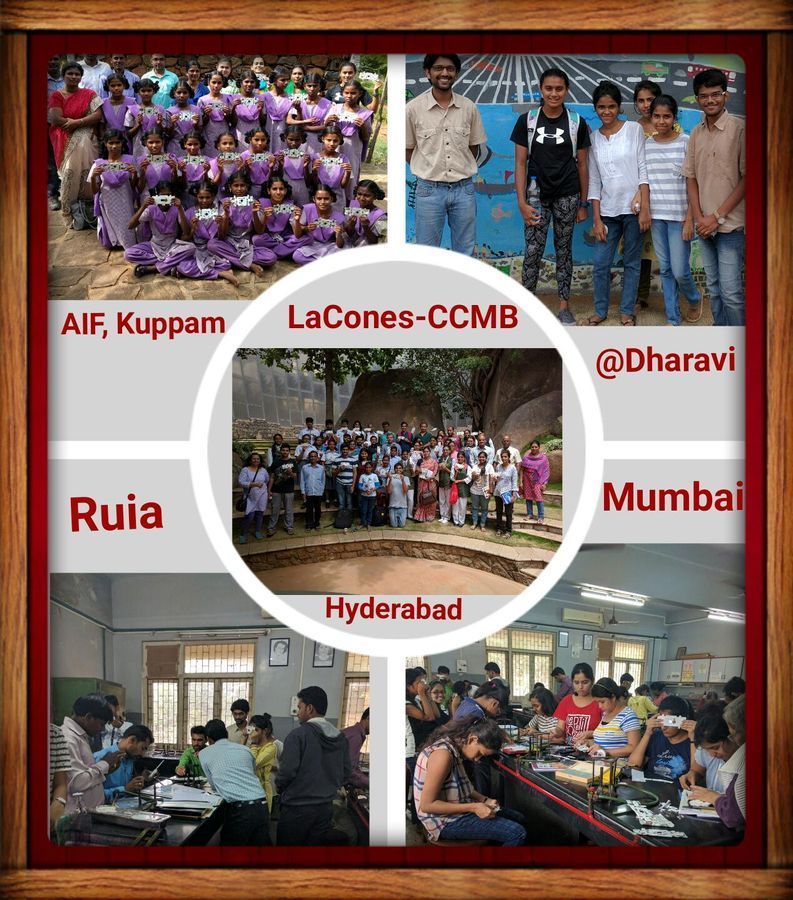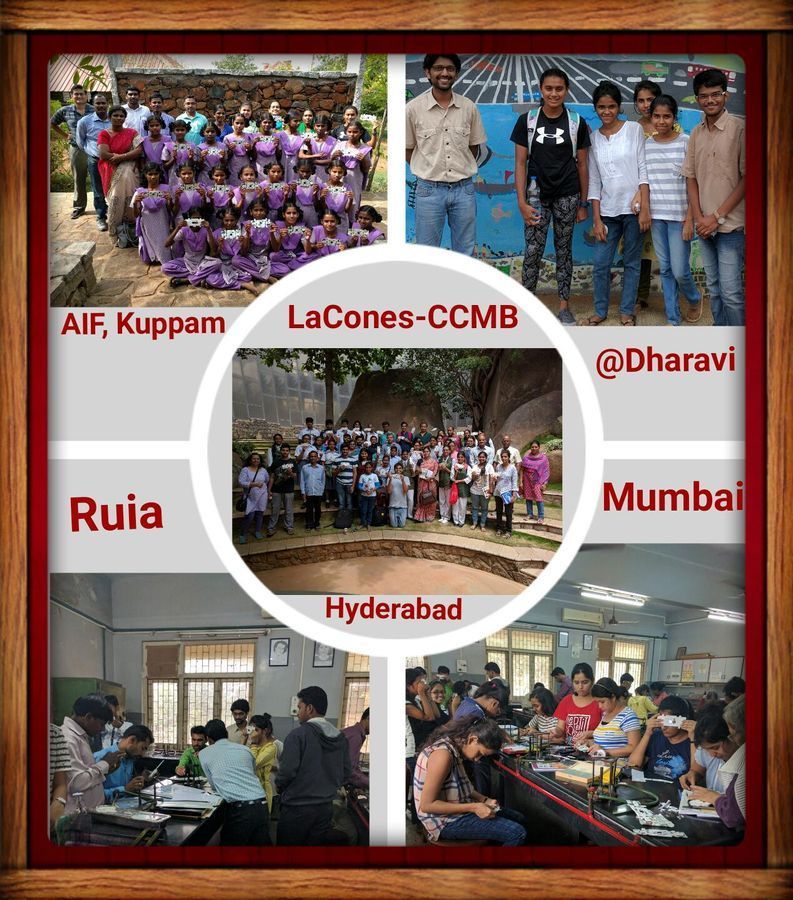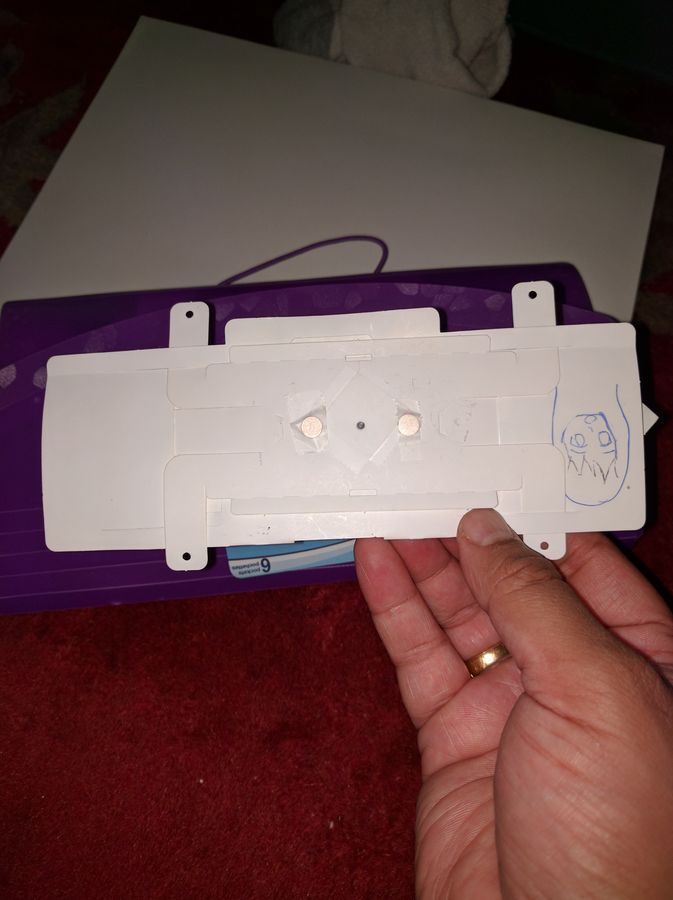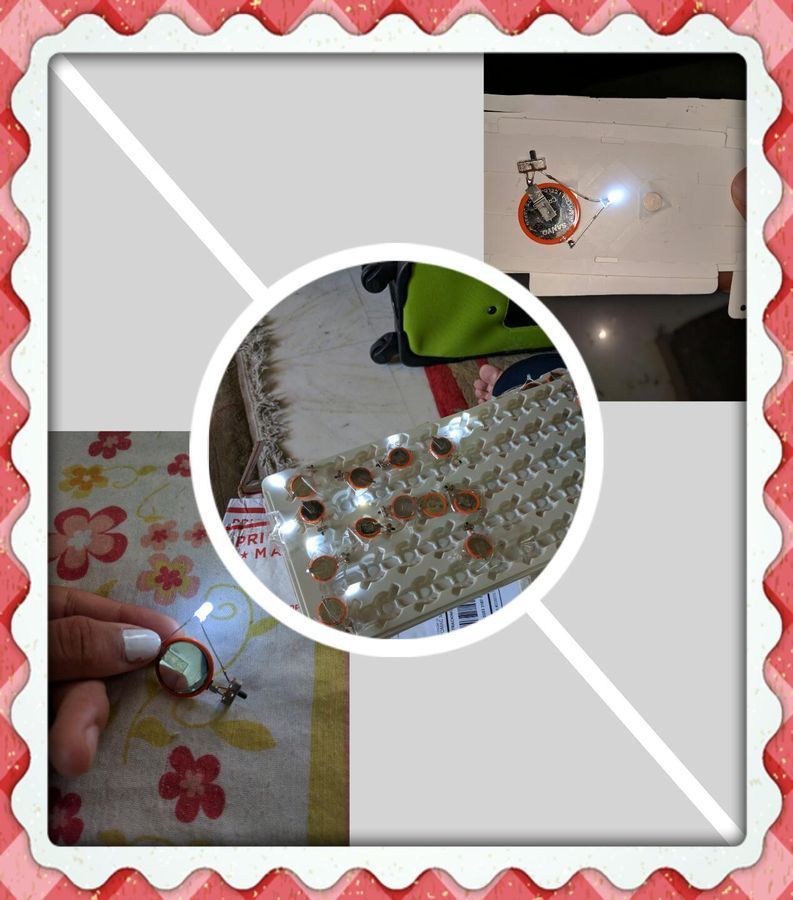Notes from various Foldscope workshops in India
 Aug 30, 2016 • 10:19 AM UTC
Aug 30, 2016 • 10:19 AM UTC Unknown Location
Unknown Location 140x Magnification
140x Magnification Microorganisms
Microorganisms
laksiyer
Human observer of life. https://sukshmadarshin.wordpress.com
97posts
1255comments
5locations

Recently, thanks to Manu and the foldscope team, Vaishnavi and I had the opportunity to conduct multiple workshops in India. I thought I’d share some of our experiences on our community page. The idea of these workshops was to work with small groups of people and expose them to a whole range of foldscope tricks so that they become proficient, and also join the larger community.
The workshops were conducted in:
Ruia College, Mumbai (7th August), ~35 participants including college students, instructors from the NGO Pratham and Dharavi Diary, a retired school teacher and a representative from the Center for Extramural Studies. Most of the participants already had some familiarity with the foldscope. Duration ~5 hours Agastya International Foundation (AIF), Kuppam Andhra Pradesh (11th August ). An NGO with a tremendous outreach across rural India. There were a total of ~36 participants including 25 students and several AIF instructors. Duration: ~5 hours ( 3 hours with kids and 2 additional hours with instructors) CCMB-LaCones, Hyderabad (16th August). The Laboratory for the conservation of Endangered Species, a branch of the Center for Cell and Molecular Biology. the approximately 50 participants included school children and their teachers from nearby areas (thanks WWF Hyderabad), Graduate students from CCMB and LaCones and a few faculty. ~ 3 h.
The workshops were conducted in:
Ruia College, Mumbai (7th August), ~35 participants including college students, instructors from the NGO Pratham and Dharavi Diary, a retired school teacher and a representative from the Center for Extramural Studies. Most of the participants already had some familiarity with the foldscope. Duration ~5 hours Agastya International Foundation (AIF), Kuppam Andhra Pradesh (11th August ). An NGO with a tremendous outreach across rural India. There were a total of ~36 participants including 25 students and several AIF instructors. Duration: ~5 hours ( 3 hours with kids and 2 additional hours with instructors) CCMB-LaCones, Hyderabad (16th August). The Laboratory for the conservation of Endangered Species, a branch of the Center for Cell and Molecular Biology. the approximately 50 participants included school children and their teachers from nearby areas (thanks WWF Hyderabad), Graduate students from CCMB and LaCones and a few faculty. ~ 3 h.

Figure 1. Pics from workshops The total time allocated for the workshop determined what we could explore as a group. The most important constraint was the time for introduction and folding the microscope and it took about 50 minutes (with a 10-15 minute slide introduction). This was usually followed by participants looking at prepared slides to hone their focusing skills, and then the participants made their own slides, either with paper or glass. Other “add-ons”included the camera-lucida and PVC coverslips . In general I felt that a 4 hour workshop is the minimum time in which one can introduce a group of about 35-50 to all the foldscope tricks and spend time with each of them to improve their technique, while a basic workshop with just folding and viewing 1-2 slides requires about 2 hours.
We also had some add-ons that I thought would be useful to share for community members conducting workshops:
1. Focus-lock . Since we just had about two magnetic couplers per person, we also took some 1/4″x1/32″ neodymium magnet discs (For specs click here ) that served as the third set of magnets and were usually installed in the “back” as shown in the figure below. These automatically align if the magnetic couplers in the lens holder are affixed first. We added some tape to keep them secure. We also asked all the participants to make paper wedges (as in this post ) for sliding focus.
We also had some add-ons that I thought would be useful to share for community members conducting workshops:
1. Focus-lock . Since we just had about two magnetic couplers per person, we also took some 1/4″x1/32″ neodymium magnet discs (For specs click here ) that served as the third set of magnets and were usually installed in the “back” as shown in the figure below. These automatically align if the magnetic couplers in the lens holder are affixed first. We added some tape to keep them secure. We also asked all the participants to make paper wedges (as in this post ) for sliding focus.

Neodymium magnets in the back. 2. Light unit . I made some 70-80 additional light units based on this design (click here ). While I soldered some of them, most of them were assembled in less than an hour’s time at a local electronics repair shop in Chennai. The great thing about this hack is that they readily stick to the neodymium magnets due to the battery and orienting the light source became a trivial exercise.

Figure 3: Light unit hacks However, while participants had light units, our main aim was to show that ambient light or a table lamp gives equally wonderful views. In AIF, we had a great table lamp using which I captured the videos shown below. We also noticed that a tubelight on table (often seen in college labs) also gave some really good phase-contrast and dark-field views.
3. Camera lucida . In Ruia and AIF, we had camera lucida setups. Thanks to a participant in Ruia (Raamesh), we hacked this setup a bit more elegantly than I usually do to give satisfactory views. If we had infinite time, I would have liked participants to draw on a projection. the camera lucida setup often gets oohs and aahs and I am seriously thinking of visiting a local arts teacher and talking to her about how some of the kids can use this set up for drawing.
3. Camera lucida . In Ruia and AIF, we had camera lucida setups. Thanks to a participant in Ruia (Raamesh), we hacked this setup a bit more elegantly than I usually do to give satisfactory views. If we had infinite time, I would have liked participants to draw on a projection. the camera lucida setup often gets oohs and aahs and I am seriously thinking of visiting a local arts teacher and talking to her about how some of the kids can use this set up for drawing.

Figure 4. Camera Lucida In each workshop we saw several interesting samples and I am hoping that the participants upload these (some have done so) and share with the microcosmos community. Below are three videos that we captured on our phone. All of these were taken at AIF. You can sense the excitement around the room. Good slides and live objects give that Aha moment that inspires participants.
Figure 5. Video of a Rotifer (Rotaria sp.) from a pond in Kuppam. Rotifer-18427-5-LI
Figure 6: Video of Cheek epithelial cells under Foldscope, illuminated by a desk lamp.
Figure 7: Video of Flagellates, bacteria and a Bdelloid rotifer. Flagellate-18427-7-LI, Rotifer-18427-7-LI
Big thanks to the organizers for their enthusiasm, warmth and affection and making these workshops flow smoothly: Profs. Ravi Phadke and Leena Phadke of Ruia College, Ramji, Thiagarajan, AIF instructors (Pranavi and team), and Dr. Bhanumathi (wild-life expert and cousin), Prof. Karthikeyan Vasudevan (LaCones, Great knowledge-reservoir of Indian wildlife and conservation ) and Prof. Rakesh Mishra (CCMB), and all the participants. Ultimately, we made the greatest gain by making so many new friends, meeting so many talented people with diverse interests and learning about things we never knew existed in nature.
— Laks (and Vaishnavi)
This post is open to read and review on The Winnower.
Big thanks to the organizers for their enthusiasm, warmth and affection and making these workshops flow smoothly: Profs. Ravi Phadke and Leena Phadke of Ruia College, Ramji, Thiagarajan, AIF instructors (Pranavi and team), and Dr. Bhanumathi (wild-life expert and cousin), Prof. Karthikeyan Vasudevan (LaCones, Great knowledge-reservoir of Indian wildlife and conservation ) and Prof. Rakesh Mishra (CCMB), and all the participants. Ultimately, we made the greatest gain by making so many new friends, meeting so many talented people with diverse interests and learning about things we never knew existed in nature.
— Laks (and Vaishnavi)
This post is open to read and review on The Winnower.
Sign in to commentNobody has commented yet... Share your thoughts with the author and start the discussion!

 0 Applause
0 Applause 0 Comments
0 Comments_300x300.jpeg)

















